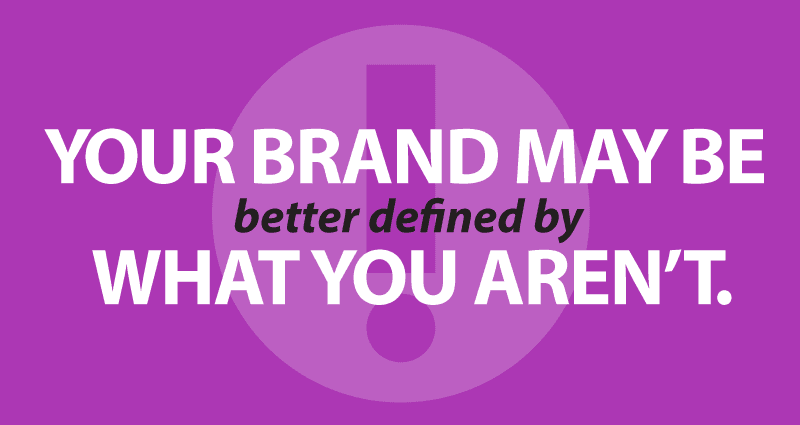
Negative space isn’t just for logos.
Artists have used negative space in compositions for eons, and graphic designers have made good use of the technique in logo design. But negative space isn’t just for logos; it may be an even better way to define your brand.
Okay, you might not have followed that if you aren’t a graphic designer, so let me back up a bit. Negative space is “the space around and between the subject(s) of an image.” That space becomes more evident when it forms a recognizable or relevant shape.

Rubin’s vase becomes much more interesting when you spot the silhouette profiles, and FedEx’s logo is rather boring until you see the arrow, which visually communicates what FedEx does. USA network simply filled in the background of their missing middle letter, while it is the thinner horizontal space that completes the crossbar of the negative space “H” in Harvester Financial Credit Union’s logo.
Once you see it, what isn’t there becomes the most obvious.
A logo that uses negative space gives the viewer a visual hook, rewarding a person’s mental compulsion to fill in a gap.
Of course your logo isn’t the same thing as your brand. Your brand is much more complicated, encompassing everything about you, everything a member experiences when they interact with your credit union. It includes everything about you, all wrapped up in one big, beautiful package.
You can’t be everything to everyone all the time, but way too many brands try. The all-inclusive approach leads to vague, fuzzy, blobby brands. Brand concepts and brand images need negative space and edges to purposefully define a brand.
Your brand may be better defined by what you aren’t.
In an age where every credit union wants to stand out, to be different, why do so many look alike? Probably because they have never identified any “negative spaces”, that which makes them unique simply by its absence.
• Why is it okay to spell out what you do, but almost taboo to hint at “what you won’t do”? If you could be known as the credit union that never gouges for overdraft or arbitrary fees, and automatically adjusts existing loan rates lower as credit scores improve, wouldn’t new members be knocking at your doors?
• Every CU has a different ratio of assets and deposits, each has products that are better fits than others, so why do credit unions have to offer the same products as every other financial institution? How profitable would you be if you became unbeatable with just a select few products? Maybe your specialty could be free checking with all the bells and whistles, a debt-killer credit card, or concierge car loans.
• If you could identify someone that isn’t your target market, wouldn’t that help you craft your marketing messages to reach those that are? For example, are you targeting young people? If you’re targeting young people, are you targeting college students or people who started careers right out of high school? Why or why not? Does that align with your actual locations, products, and demographics?
• What are you willing to give up? This is the toughest question of all, but it has the highest potential payoff. If 80% of your branches are in low-income areas, try to forget about new car loans and give up the idea that anyone cares about your low rates — they just want to know you’re going to say “yes”. Focus on risk-based pricing and ways to “never say no” for used car loans.
Defining what you aren’t is incredibly powerful. It’s one of the most important ways to understand what you are.
- Are you scared yet? - October 22, 2024
- OMG! Who really IS our competition?!? - September 24, 2024
- Do 5-star ratings really mean anything? - August 27, 2024
